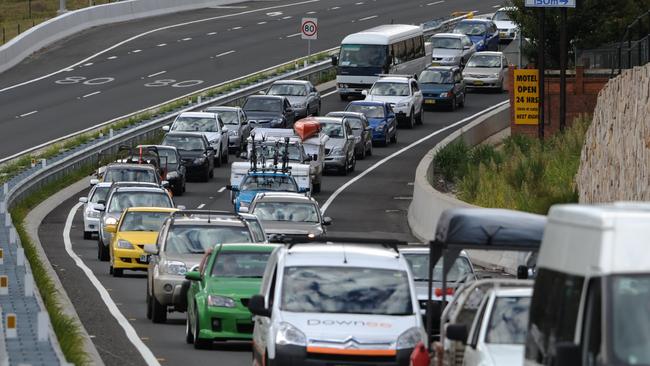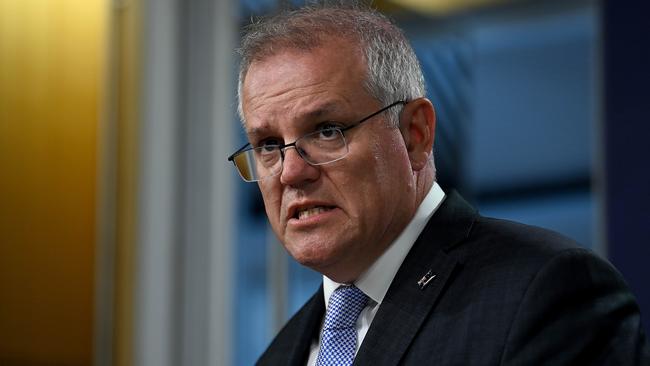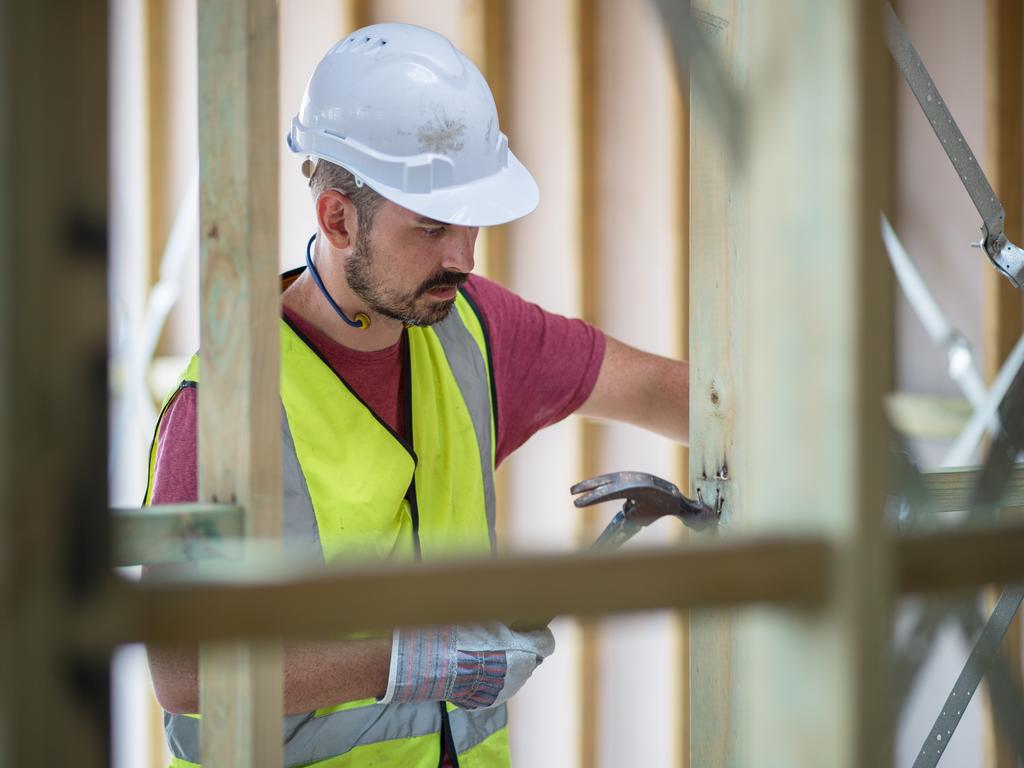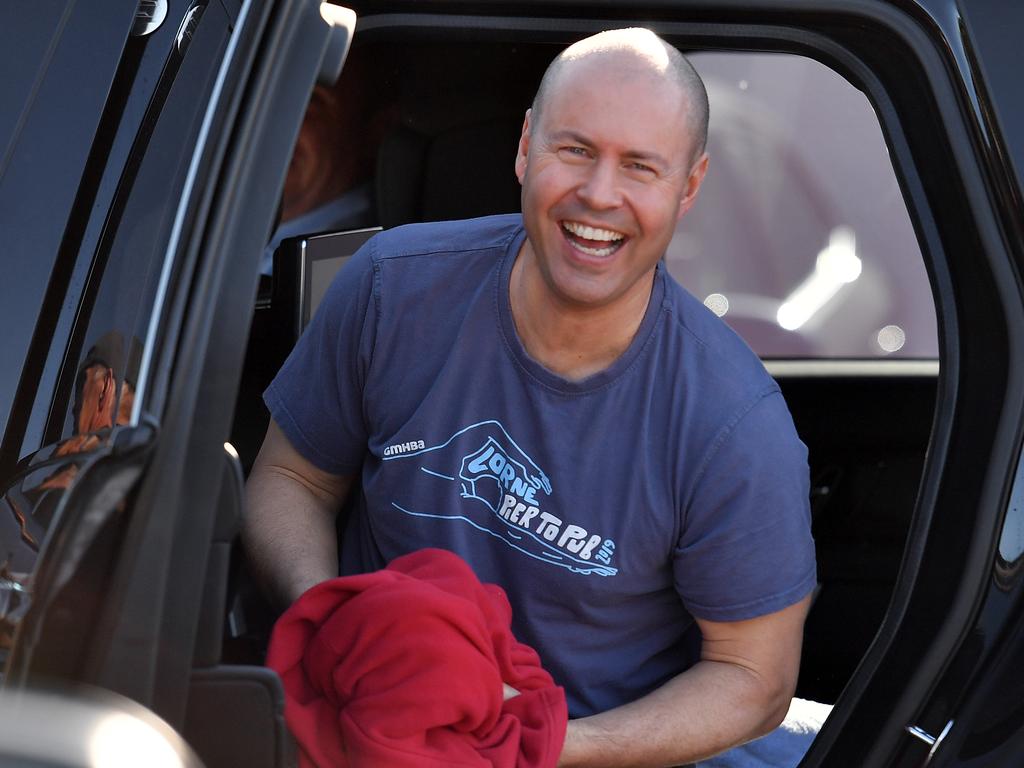Jobs boom as Scott Morrison spends on road and rail
Scott Morrison will unveil a $10bn plan to fast-track road and rail projects in a pre-election budget delivering jobs in regional centres and marginal seats.

Scott Morrison will spend more than $10bn building and fast-tracking road and rail projects across Australia, in a pre-election budget delivering infrastructure upgrades and jobs in regional centres and marginal electorates.
The Prime Minister and Deputy Prime Minister Michael McCormack will unveil the major budget package on Monday after last year increasing the government’s 10-year infrastructure plan to more than $110bn, supporting thousands of jobs during the COVID-19 pandemic.
The 2021-22 national infrastructure investment commitments are headlined by more than $4bn for a new Melbourne Intermodal Terminal, with 1900 jobs created during construction and operation, and upgrades of the Great Western Highway between Katoomba and Lithgow in NSW.
Major road and rail upgrades included in the infrastructure plan are located in key election battlegrounds in NSW, Queensland, Tasmania, Western Australia and Victoria. The Great Western Highway project, unlocking congestion in the Blue Mountains and supporting 3902 jobs, straddles the Labor-held Macquarie electorate, which the Coalition will target at the next election.
The Morrison government will spend $400m on Princes Highway upgrades between Jervis Bay and Sussex Inlet, in the marginal southern NSW seat of Gilmore held by Labor MP Fiona Phillips.

With an election potentially held late this year, there is also funding for multiple projects in northern Tasmania and central and north Queensland, where the Coalition faces challenges in seats including Bass, Braddon, Flynn, Dawson and Leichhardt.
Mr McCormack described the national infrastructure investment as a “centrepiece of our national economic recovery plan”.
The Transport and Infrastructure Minister said the budget package would lay the “economic foundations for recovery from the pandemic”.
Mr Morrison said the infrastructure rollout would “make roads safer, reduce travel times and support thousands of jobs”.
The Melbourne Intermodal Terminal has been identified by the Morrison government as a “national priority project”, and critical to the delivery of its national freight and supply chain strategy.
In a briefing note, the Department of Infrastructure and Transport said a 1 per cent improvement in productivity could generate $8bn-20bn in savings to the national economy over 20-years, with Victoria’s freight demand expected to grow 94 per cent by 2045. The new terminal is expected to be delivered in time for the start of operations along the entire inland rail route in 2027.
“Intermodal freight terminals are critical to the operation of an efficient rail freight network. Victoria is the largest generator and receiver of intercapital rail freight and the intermodal terminal will reduce congestion on key Melbourne arterial roads,” the brief said.
“(It will remove) around 4000 trucks movements per day on busy metropolitan arterial roads and by an estimated 5500 per day in the next 15 years.
“This means a very large amount of trucks off the roads in Melbourne.”
Josh Frydenberg said the infrastructure package complemented government-backed projects — including the Western Sydney International Airport, Melbourne to Brisbane Inland Rail and Melbourne Airport Rail Link — that will “define the success of local communities for years to come”.
“Our record infrastructure investment not only creates jobs now, it also sets Australia up for the future,” the Treasurer said.
Joint-funding infrastructure arrangements will require the Morrison government to work with state and territory governments on timelines to accelerate the delivery of upgraded roads and rail networks.
Since the start of the pandemic, efforts have been made to fast-track infrastructure projects at a local level, which is considered crucial to maintaining employment levels in regional Australia.
In South Australia, the government will spend $161.6m delivering the Truro Bypass on the Sturt Highway by 2026, with construction starting next year.
An additional $400m has been provided for upgrades of the Inland Freight Route between Mungindi and Charters Towers in Queensland, along with $400m for the Bruce Highway. The government will also spend $240m on the Cairns Western Arterial Road duplication and $178.1m for improvements on the Gold Coast rail line between Kuraby and Beenleigh.
Western Australia will also benefit from funding boosts including $200m for upgrades of the Great Eastern Highway and $55m for the Mandurah Estuary Bridge duplication.








To join the conversation, please log in. Don't have an account? Register
Join the conversation, you are commenting as Logout